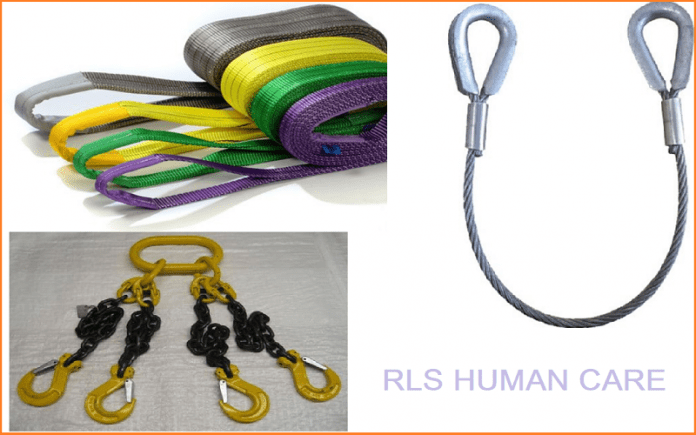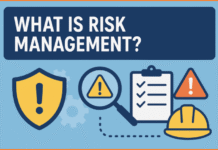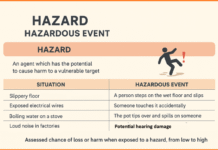Lifting and moving objects isn’t as easy as it may sound. The scope of lifting operations is quite varied, requiring site managers to move anything from generator sets to prefabricated construction blocks, shipping cargo, and even airplane parts and components. Each new lifting scenario presents a unique set of challenges for the team.
A poorly chosen lifting sling can throw the entire operation off balance and endanger lives as well as equipment worth millions. To avoid such mishaps, site managers need relevant information and guidance to execute a lift safely and professionally.
Every set of variables affecting the lift needs to be analyzed and uniquely solved, keeping safety and cost-effectiveness in mind as well. If you too are facing such a challenge, this guide will help you choose the right lifting sling for your specific worksite requirements.
Understanding the different types of Lifting Slings
- Polyester Slings
These are the most commonly used lifting slings and they usually come in handy in almost all kinds of lifting and moving operations. Made of polyester, nylon, or other high-grade synthetic materials, these slings are relatively cheaper and more easily manageable than other sling options.

Pros: Polyester slings are lightweight, flexible, cost-effective, and can be used in multiple types of hitches.
Cons: They are not heat resistant and are more susceptible to wear and tear.
- Chain Slings
This is a more heavy-duty variety of lifting slings and is more commonly used in foundries, steel mills, chemical factories and other harsh conditions. Chain slings are available in a single leg, 2 leg, 3 leg, and 4 leg varieties and can be used in specific types of hitches such as the vertical basket and choker hitch.

Pros: They are more durable, strong, and easy to repair. They can also handle high-temperature lifts.
Cons: They are heavy in weight and not that cost-effective.
- Wire Rope Slings
As the name suggests, these slings have a core made out of solid steel and fiber, giving them a high degree of strength, flexibility, and resistance. Wire rope slings are commonly used in construction, automobile operations, oil, and gas units, and even in general manufacturing.

Pros: These are more affordable, lightweight, resistant to heat and corrosion, and more versatile.
Cons: They have a low breaking strength, especially in operations where metal fatigue is a common factor. Also, these slings cannot be repaired or used in temperatures beyond 200°C and -40°.
5 Tips for choosing the right Lifting Slings for your lifting operation
When tasked with selecting the most suitable lifting sling for a moving operation on your worksite, make sure you consider the following factors as a guide to help make your choice.
- Load Weight
The first and most important factor to consider is the weight of the load being lifted and moved. Ensure that the lifting sling you are selecting has the appropriate Working Load Limit (WLL) in the planned configuration to handle the load in question.
- Headroom
Headroom is the distance between the crane hook and the load being lifted and moved. In case you are short on headroom in a lift, ensure that you use shorter slings and double part grommets. Lifting beams also come in handy in such scenarios.
- Load Type
Fragility, temperature, and resistance capacity of the load being moved are also important factors to keep in mind when selecting the right lifting sling for the job. Hot objects cannot be moved using polyester slings. Chain and Wire Rope Slings are suitable to lift objects with abrasive surfaces whereas polyester slings are more suitable for operations where the load is likely to sustain abrasion damage as a result of slinging and hitching.
- Worksite Environment
In operations where lifts have to be executed in highly corrosive environments, chain or wire rope slings become the more obvious choice, provided that they have been specially treated to enhance their corrosion resistance.
- Cost Effectiveness
Each type of sling offers a different configuration of durability, usability, and longevity in different work scenarios. While chain slings are definitely more long-lasting than polyester slings, they may not be as suitable and cost-effective in, say airport cargo lifting operations. Ensure that you make the right choice in terms of your specific worksite needs.
Use the above-mentioned factors to ensure you are using the right lifting equipment for the right job. All the best!
Read: SAFE WORKING LOAD & SAFETY FACTOR
Read: Testing, Inspection and Maintenance of Lifting Machine and Tackles






Thank you for sharing such a fantastic blog with us. We truly appreciate the valuable information you’ve provided. The insights are highly informative and resonate with our shared goals. We are equally dedicated to the same mission! Feel free to reach out to us at marketing@constromech.in or visit our website: https://constromechsolution.com/.
Thanks for sharing this wonderful blog! We work for the same cause! Get in touch with us at + 912262428500 or our website: https://rudindia.com/